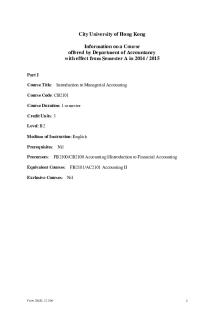Lecture notes – The overview of Grocott-Gomori’s Methenamine Silver Staining PDF

| Title | Lecture notes – The overview of Grocott-Gomori’s Methenamine Silver Staining |
|---|---|
| Course | Biology |
| Institution | University of Salford |
| Pages | 2 |
| File Size | 34.2 KB |
| File Type | |
| Total Downloads | 8 |
| Total Views | 136 |
Summary
Lecture notes based on The overview of Grocott-Gomori’s Methenamine Silver Staining are useful for exams...
Description
Lecture notes – The overview of Grocott-Gomori’s Methenamine Silver Staining The process of Grocott-Gomori’s Methenamine Silver (GMS) stain is a histological stain that is used majorly for the identification of carbohydrates in fungal microorganisms. This staining method was named after György Gömöri, a physician from Hungary, who developed the staining methodology. This means Its initial application to assess missing tissues and diseases in the liver and the rectum (Nadworny, Wang, Tredget, & Robert, 2010) and then used for the identification of Pneumocystis jiroveci, a fungus known to cause an opportunistic infection called pneumocytosis, in immunocompromised and immunosuppressed patients. This is In comparison to other stains like Periodic Acid-Schiffs stain and Gridley Stain, Goromi has a higher sensitivity to for detecting fungi and other polysaccharide-rich microorganisms in paraffin prepared sections. The Gomori’s methenamine-silver nitrate and chromic acid comprise the major reagents used in conventional Grocott stain It has also been used for the identification of fungi in tissue sections. Its application in Histology makes it ideal for the detection and demonstration of fungi in aspirates, tissues, and smears.
The differen Objectives To demonstrate the presence of fungi in a given sample. To demonstrate the presence of Pneumocystis jiroveci and Histoplasma spp.
freestar Principle of Grocott-Gomori’s Methenamine Silver Staining The fungal cell wall is composed of polysaccharides which on interaction with chromatin Acid, undergo oxidation to form aldehydes. This is demonstrated by the reduction of the alkalinehexamine-silver complex.
The process of Grocott’s alkaline hexamine-silver solution undergoes reduction to form precipitates of silver ions making the cell wall of the fungi appear black a reaction is known as argentaffin reaction (the ability of cells to reduce the silver solution to metallic silver forming a black tissue element). Argentaffin cells are found of the epithelial lining of the lungs, the intestines, and melanin. This reaction drives the outcome of the result of the stain.
The staining methodologies are of two types:
The conventional method at room temperature Microwave method
The Reagents Chromium trioxide solution, Sodium Bisulfite solution, Silver nitrate solution, methenamine solution, Borax solution, Gold chloride solution, sodium thiosulfate solution, Light green stock solution....
Similar Free PDFs

Lecture notes, lecture Overview
- 16 Pages

Overview of the Brain (Notes)
- 15 Pages

ANT3514C Overview - Lecture notes 26
- 70 Pages

Overview of the immune system
- 3 Pages

CB2101 - Overview of the course
- 7 Pages

The Origin of Species Overview
- 3 Pages

Staining MELS
- 4 Pages

CCA - Ksp of silver acetate
- 3 Pages

Silver Corporation
- 4 Pages
Popular Institutions
- Tinajero National High School - Annex
- Politeknik Caltex Riau
- Yokohama City University
- SGT University
- University of Al-Qadisiyah
- Divine Word College of Vigan
- Techniek College Rotterdam
- Universidade de Santiago
- Universiti Teknologi MARA Cawangan Johor Kampus Pasir Gudang
- Poltekkes Kemenkes Yogyakarta
- Baguio City National High School
- Colegio san marcos
- preparatoria uno
- Centro de Bachillerato Tecnológico Industrial y de Servicios No. 107
- Dalian Maritime University
- Quang Trung Secondary School
- Colegio Tecnológico en Informática
- Corporación Regional de Educación Superior
- Grupo CEDVA
- Dar Al Uloom University
- Centro de Estudios Preuniversitarios de la Universidad Nacional de Ingeniería
- 上智大学
- Aakash International School, Nuna Majara
- San Felipe Neri Catholic School
- Kang Chiao International School - New Taipei City
- Misamis Occidental National High School
- Institución Educativa Escuela Normal Juan Ladrilleros
- Kolehiyo ng Pantukan
- Batanes State College
- Instituto Continental
- Sekolah Menengah Kejuruan Kesehatan Kaltara (Tarakan)
- Colegio de La Inmaculada Concepcion - Cebu






